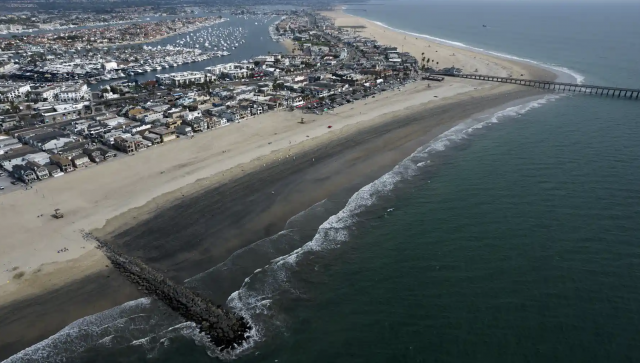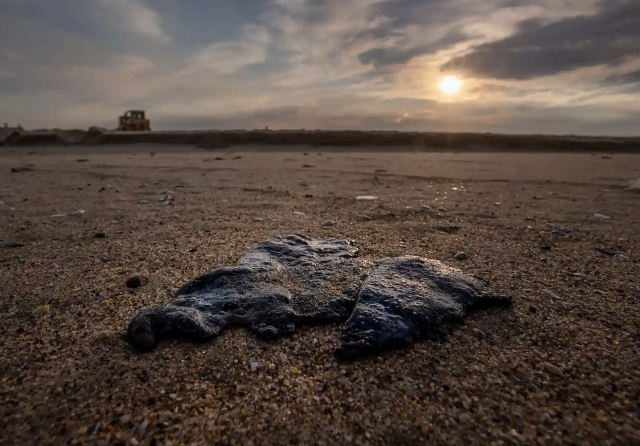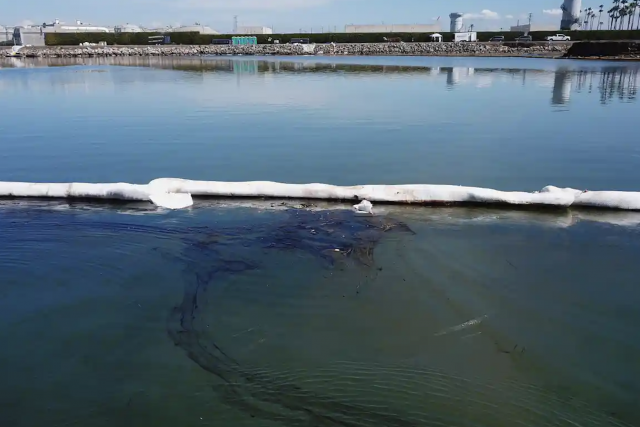A gash in an underwater pipeline sent tens of thousands of gallons of oil rushing into the waters near Los Angeles last weekend, blackening beachesand endangering wildlife.
While the US Coast Guard believes a ship’s anchor may have damaged the pipeline months ago, California’s ageing oil infrastructure will also bear increasing scrutiny. Experts say that the devastating spill is unlikely to be the last, especially in a rapidly changing industry where equipment is primed to suffer from underinvestment and lack of attention.
“We are in store for more spills,” says Daniel Kammen, a researcher at the University of California, Berkeley. “And it’s not because spills just happen.”
Part of the issue is California’s transition away from fossil fuels and toward green energy. The state has some of the most ambitious climate goals in the country, aiming for net-zero emissions by 2045. As a result, infrastructure to support fossil fuel extraction is being phased out in favor of greener technologies. But in the meantime many oil rigs remain in operation, and companies may be disinclined to invest in a sector that’s slowly going out of business.
“Operations and maintenance are expensive, especially if you don’t see a growing future in this area,” says Kammen, who was part of a
The spill is major but nowhere near the really big ones, says Richard Ambrose, a professor and researcher at UCLA who monitored the cleanup after the Exxon Valdez oil spill in 1989. He adds that this current spill has a lot of similarities to the 2015 Refugio spill in near Santa Barbara: “It ranks in the mid-tier.”
A lot of the damage depends on how quickly a response can be mobilized and on ocean conditions, Ambrose says. “The biggest question here is how much oil comes to shore and for how long,” he says, and that depends on ocean currents and winds.
This spill has already reached the Talbert Marsh, a 25-acre sensitive and valuable habitat along the coast. “Wetlands are the most sensitive to oil and they also support a lot of sensitive species,” Ambrose explains. “That’s the habitat we’d like to protect and we haven’t been successful for all of them.”
Lisa Levin, an oceanographer at UC San Diego’s Scripps Institution of Oceanography, says oil spills have a direct impact on shore birds and marine mammals – but they also affect food webs and smaller organisms that ultimately will reach commercial species. “All of this puts more stress on the ecosystem that is already coping with climate change and contaminants,” she says.
Ambrose says the sooner California can move to renewable energy, the sooner we won’t have to be moving oil around – but that’s not going to happen in the immediate future. “In all the ways we move oil, they are subject to accidents. This pipeline is just one way, and there’s a whole oil transportation network, with thousands of spills every year.”
team that won the 2007 Nobel peace prize for their work on the climate crisis. “We see this in other industries – for example the underinvestment in recycling, or car manufacturers that are phasing out certain classes of vehicles. Accidents, risks and costs all go up.”
The southern California spill occurred in federal waters at the Elly rig, owned by Amplify Energy, about five miles offshore. The state declared an end to new offshore oil drilling 50 years ago, and the federal government stopped issuing new leases 35 years ago. Yet there are still four rigs in California waters and 22 in federal waters off the coast of the state. Together, they produce about an average of 12,200 barrels of oil per day – only a fraction of a per cent of the total used in the US.
A Stanford study found that California’s oil is some of the most expensive in the world to extract – in terms of economic costs but also climate costs. The easy oil was sucked out decades ago, and the oil that remains is difficult to reach and requires more energy, meaning more greenhouse gas emissions.



You must be logged in to post a comment.